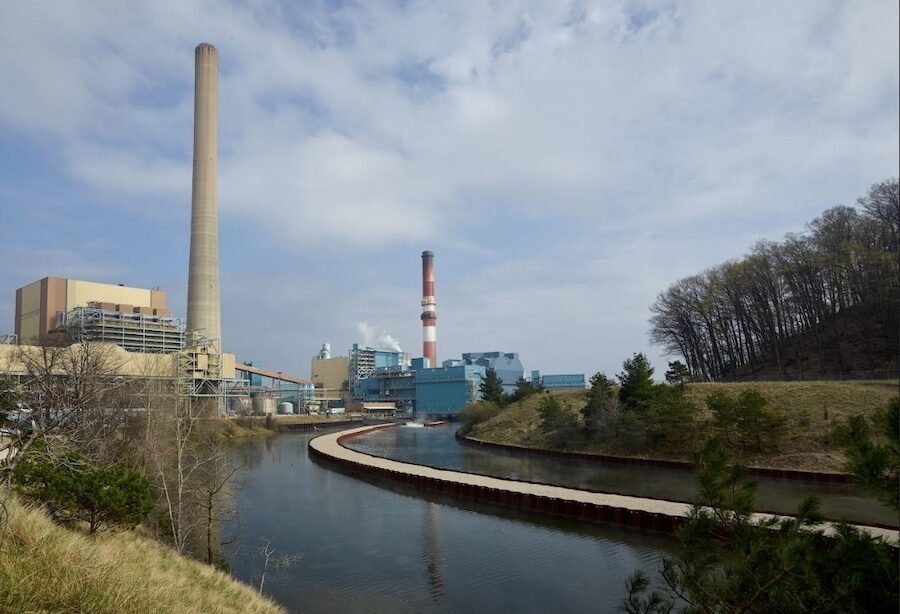
Trump Admin Quietly Pushes Rule to Reverse Mandated Power Plant Emissions Cut

The Trump administration has taken several new actions in recent days, some with little public notice, to boost fossil fuel power generation in the U.S, particularly from coal-fired plants.
The U.S. Environmental Protection Agency waited until Saturday, May 24 to confirm to media, only after a New York Times report, that it is drafting a proposed regulation to eliminate all current restrictions on greenhouse gas emissions from coal and gas-fired power plants. The report is based on sources and review of internal documents.
“Many have voiced concerns that the last administration’s replacement for that rule is similarly overreaching,” an EPA spokesperson told Reuters. “As part of this reconsideration, EPA is developing a proposed rule.” The proposal is set to be published in the Federal Register after White House and federal agencies’ review, possibly in June, the spokesperson said.. EPA Administrator Lee Zeldin had said in a previous statemen that the agency is “seeking to ensure [EPA] follows the rule of law while
providing all Americans with access to reliable and affordable energy.”
The draft regulation states that carbon dioxide and other plant greenhouse gases “do not contribute significantly to dangerous pollution” or to climate change because they are a small and declining share of global emissions, according to the Times report, and that cutting emissions would have no “meaningful effect” on public health. The U.S. share of emissions is just 3% of global pollution from power generation, and the country has reduced its share of global emissions in the past 20 years, responsible for 5.5% of global emissions in 2005, EPA contends in the draft rule.
But UN data has found that fossil fuels now account for more than 75% of global greenhouse gas emissions and nearly 90% of CO2 emissions, with the U.S. second to China in level of polluting power plant emissions.
EPA released no further details from the draft rule, said the Times, also speculating it could be finalized by the end of the year, “an extraordinarily fast pace.”
Supporters are optimistic but other observers expect the rule to face lawsuits if it becomes final and remain concerned it could block future administrations from regulating CO2 emissions from power plants and undermine climate change regulation.
“It is a good step forward in line with the rule of law,” Thomas Pyle, president of oil and gas advocacy group American Energy Alliance, told the Washington Post.
But Vickie Patton, Environmental Defense Fund general counsel said “Fossil fuel power plants are the single largest industrial source of climate destabilizing carbon dioxide in the United States,” calling the proposed rule “an abuse of [EPA] responsibility under the law. … that flies in the face of common sense.”
‘Emergency Order’
The EPA confirmation followed by one day an ‘emergency order” from U.S. Secretary of Energy Chris Wright that directs grid operator Midcontinent Independent System Operator (MISO) and Michigan utility Consumers Energy, to ensure that the 1.56-MW J.H. Campbell coal-fired power plant in West Olive, Mich., “remains available for operation,” noting its planned shutdown on May 31, which DOE said “is 15 years before the end of its scheduled design life.”
The plant’s three units were built in 1962, 1967 and 1980. The site of the plant, the last of the utility’s nuclear power facilities, was then set to be cleared.
Wright said the closure reversal, now set to last until Aug. 21, is authorized under the Federal Power Act and “is in accordance with President Trump’s Executive Order: Declaring a National Energy Emergency.”
Michigan utility regulators termed the federal order “unnecessary” and noted no power emergency in the state or the Midwest region. Katie Carey, a Consumers Energy spokesperson said in a statement said, the utiity “plans to comply with the 90-day pause. We are reviewing the executive action and the overall impact on our company.”
The utility had announced in February an agreement with Ashcor USA Inc., a unit of ATCO Ltd., to extract and repurpose millions of tons of impounded coal ash from the J.H. Campbell site to be made into a high-grade cement substitute.
Meanwhile, the Trump Administration moved on May 22 to support a lawsuit by Texas and 12 other states against large private infrastructure investors Blackrock, Vanguard and State Street Global Advsors that claims they conspired to reduce competition in the U.S. coal sector that risks undermining the federal goal of domestic energy independence. The U.S. Justice Dept. and Federal Trade Commission filed a statement of interest in the case that State Street called “baseless.”
President Donald Trump also signed four executive orders to propel a faster buildout of U.S. nuclear power plants, including a directive for the Energy and Defense Departments to construct reactors at military bases, on federal lands and sited near data centers.
The orders also seek strategies for how reactors could be constructed without approval of the federal Nuclear Regulatory Commission and sets a goal to increase U.S. nuclear power generation capacity to 400 GW by 2050, up fourfold from the current 100 GW level that is the putput of more than than 90 operating reactors.
The Tennessee Valley Authority last month submitted to the agency the first portion of a construction permit application to build a GE Hitachi BWRX-300 small modular reactor at its Clinch River nuclear site in Oak Ridge, Tenn. If built, the Clinch River unit will serve as a flagship for U.S. commercial deployment of the SMR design,
“The application is essentially the blueprint for the plant’s design and safety systems, and the NRC must approve the plans before construction could begin,” TVA said, noting that it will submit the full construction permit application by the end of June.
TVA has contracted Bechtel, Sargent & Lundy and GE Hitachi as its team to plan, design and potentially procure, construct and commission Clinch River Unit 1, the companies said. GE Hitachi is the designer of the BWRX-300 system.
Post a Comment
You must be logged in to post a comment.






